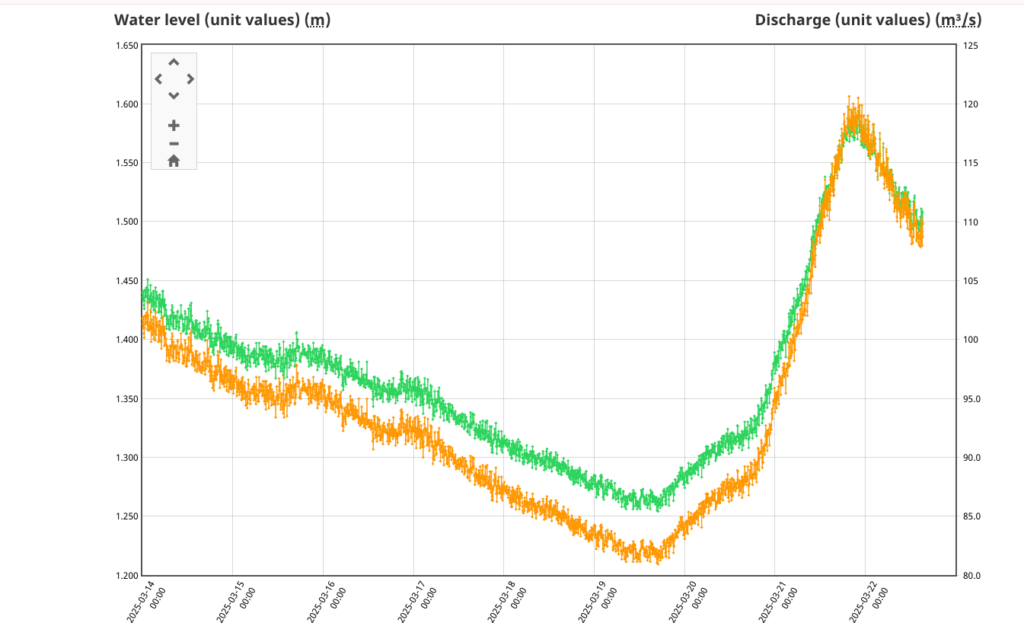This weekend me and my friend decided to drive to Cowichan River to get some fishing in but all the snow is melting and running into the river which caused for really high water levels making it super hard and unsafe to fish the river. We were told if the river was over 1.5m that we probably wouldn’t catch anything and it was at 1.6m when we were there.
Understanding Water Levels and Their Impact
Water levels in the Cowichan River fluctuate due to various factors, including seasonal rainfall and snow melting. These fluctuations directly influence fish behaviour and accessibility for fishers, according to One Cowichan.
- High Water Levels: Elevated water levels, often resulting from heavy rainfall or rapid snowmelt, can make fishing challenging. Fast currents and murky waters can limit fish visibility and make it harder for the fish to see the flies. Additionally, safety becomes a concern, as strong currents can be hazardous.
- Low Water Levels: During periods of drought or reduced rainfall, the river’s water levels can drop significantly. This can lead to warmer water temperatures and reduced oxygen levels, stressing fish populations. Moreover, low water can concentrate fish into smaller areas, increasing their vulnerability and potentially leading to overfishing. This is often a problem in the summers and can lead to river closures for the wellbeing of the fish.
Optimal Water Levels for Fishing
Determining the ideal water level for fishing on the Cowichan River requires monitoring real-time data, I began checking it on this website after we got there and realized the conditions were not close to being ideal and catching a fish probably wasn’t likely https://wateroffice.ec.gc.ca/report/real_time_e.html?stn=08HA011.
There is a graph that shows the exact water level for many different rivers, this one is for Cowichan

What This Experience Taught Me
To ensure a successful and safe fishing experience on the Cowichan River:
- Monitor Water Levels: Regularly check real-time water level data from reliable sources before your trip.
- Prioritize Safety: Always be cautious of rapidly changing water conditions, especially during or after heavy rain/snowfall.